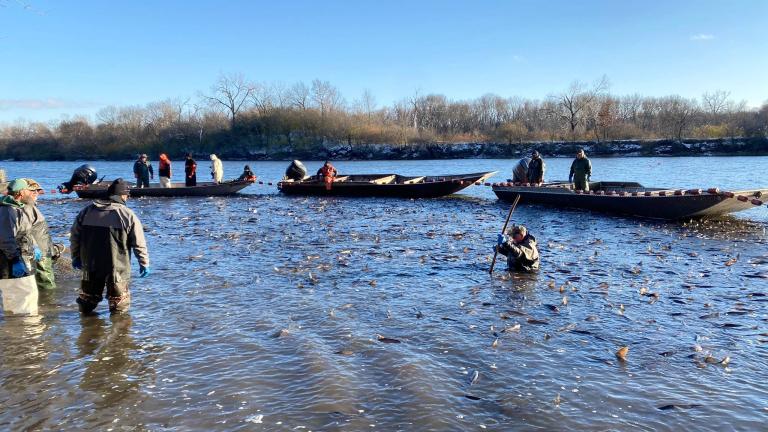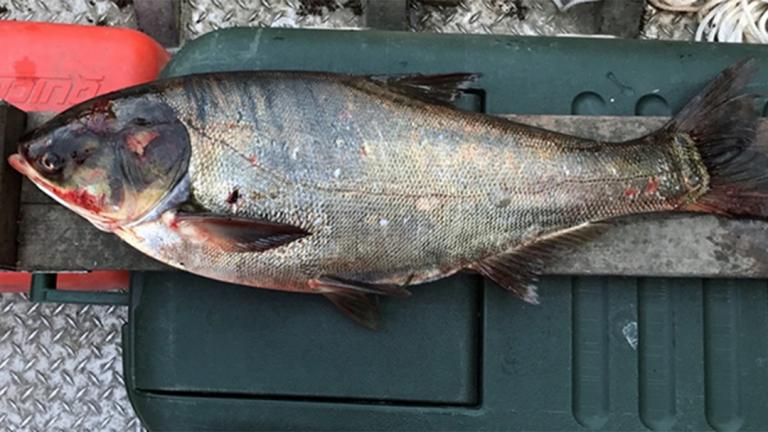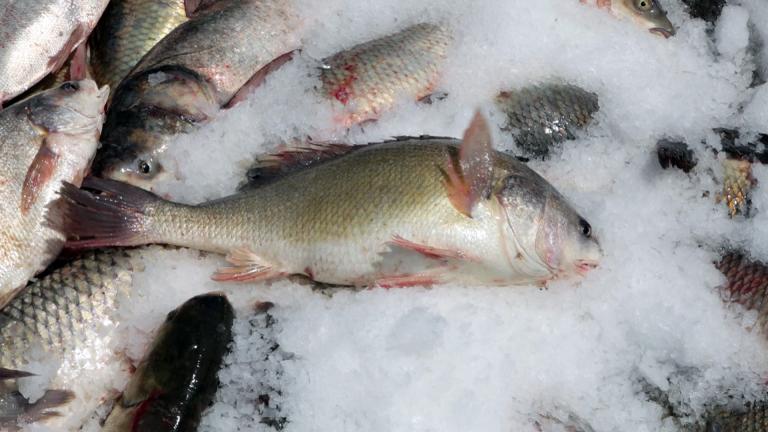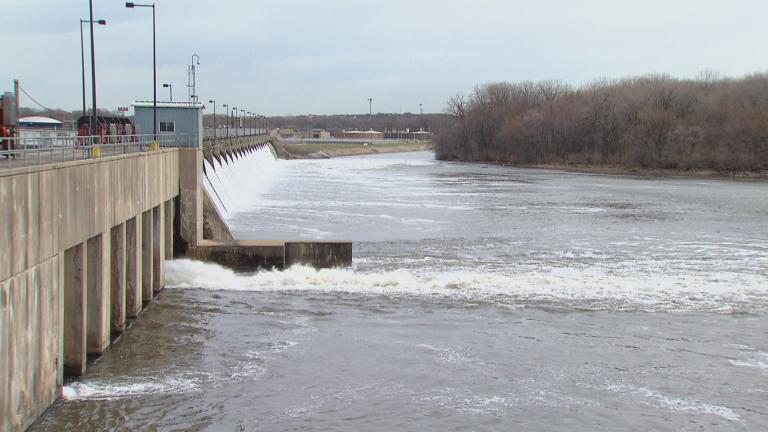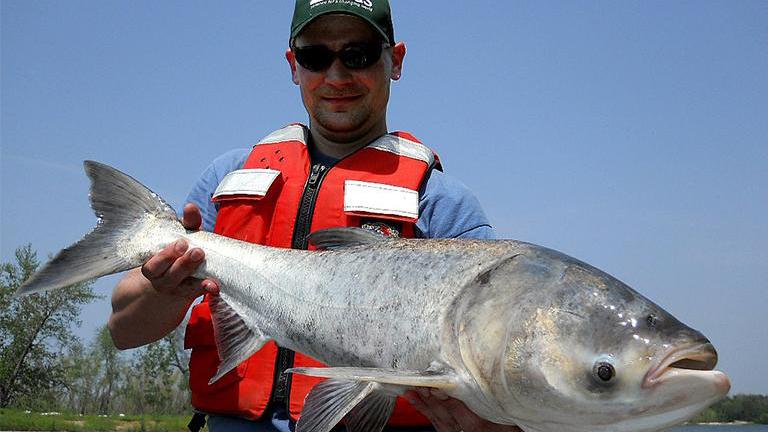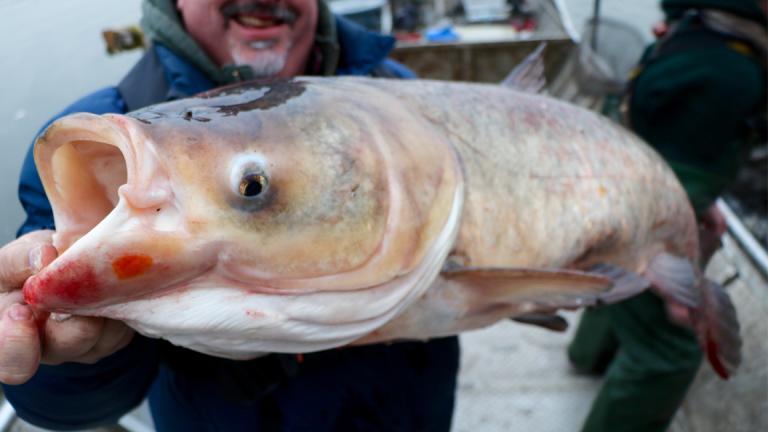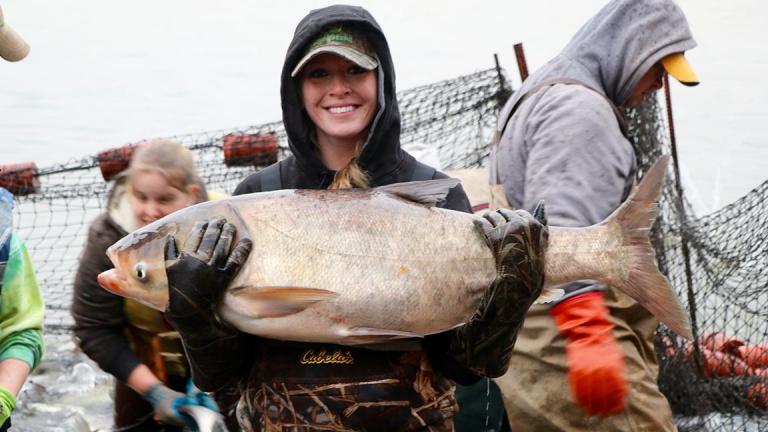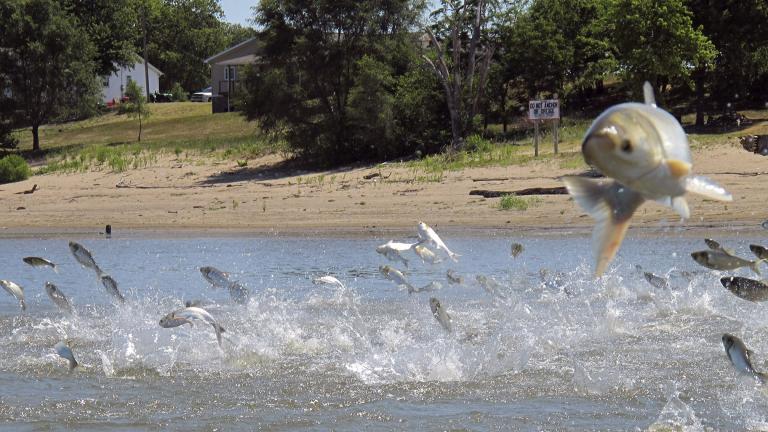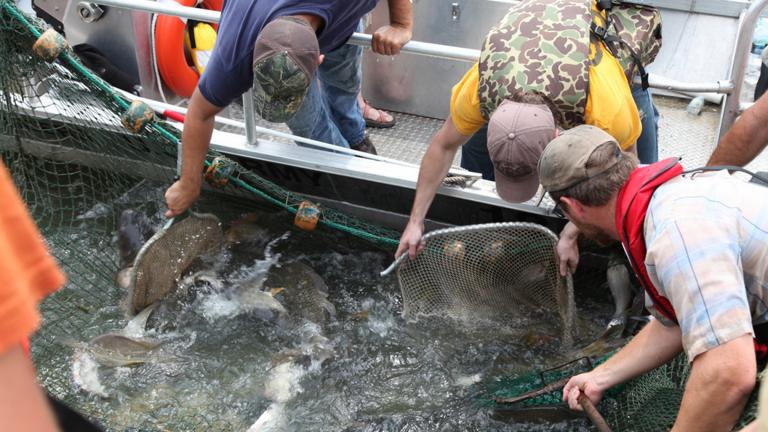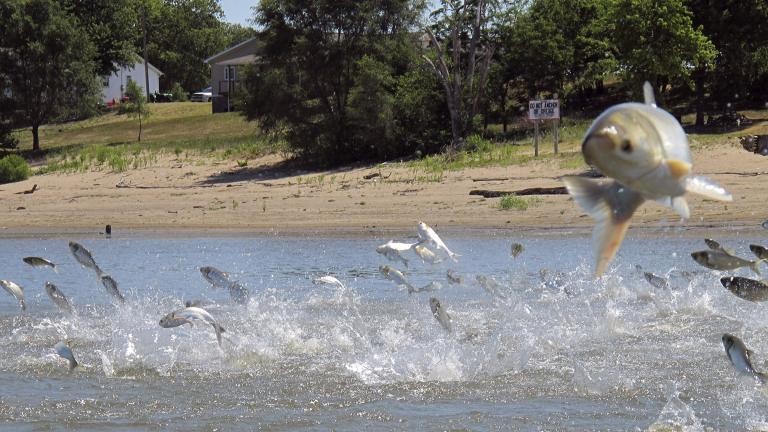The Illinois Department of Natural Resources is reporting an intensive 10-day “harvest” operated that netted 750,000 pounds of invasive silver carp, pulled from the Illinois River near Starved Rock.
Asian Carp
Over the last five years, agencies such as the U.S. Fish and Wildlife Service and Minnesota Department of Natural Resources have employed a new seek-and-destroy strategy that uses turncoat carp to lead them to the fish’s hotspot hideouts.
Officials say the invasive carp’s presence does not necessarily mean there is a reproducing population of the species in the area, which is located above electric dispersal barriers. The fish captured Thursday was more than 38 inches long and weighed about 22 pounds.
Illinois is rebranding Asian carp as “copi” in a bid to get people to eat the invasive fish into submission. Fishermen are catching thousands of pounds a day and barely making a dent in the number of carp in waterways like the Illinois River, where it's estimated 20 million to 50 million could be harvested annually.
A stalled movement to give the invasive Asian carp a more palatable name has regained momentum, and the big reveal is now set for June 22.
The U.S. Army Corps of Engineers has allocated $225.8 million to the Brandon Road Lock and Dam invasive carp barrier. The funds will complete the planning and engineering phase of the project.
The U.S. Army Corps of Engineers is flush with billions of dollars following passage of the bipartisan infrastructure bill. Some of those funds are being funneled toward critical projects in the Chicago region, the Corps announced Wednesday.
Great Lakes Governors Say, ‘Not Us’
Great Lakes governors are asking the federal government to fund costs of the Brandon Road Lock and Dam project on the Des Plaines River, designed to block the incursion of invasive carp into the lakes.
When a fish the size of a 10-year-old child was pulled from the Humboldt Park lagoon earlier this month, the reaction quickly went from “Oooh” to “Uh-oh.” The angler had reeled a whopper of an invasive bighead carp accidentally stocked 20 years ago. Are there more?
At the end of June, Illinoisans will no longer hear the words “Asian carp.” After several years and hundreds upon hundreds of millions spent trying to keep them from the Great Lakes, how can that possibly be? We explain.
When it comes to keeping Asian carp out of the Great Lakes, Illinois is the last line of defense, but the state’s not alone in the battle. Michigan will transfer up to $8 million to Illinois via an intergovernmental agreement as part of an effort to keep Asian carp at bay.
Efforts to increase demand for Asian carp as a food are aimed at buying time for development of a long-term solution to the threat posed by the invasive fish.
Sport fish have declined significantly in portions of the Upper Mississippi River infested with Asian carp, adding evidence to fears about the invader’s threat to native species, according to a new study.
If Asian carp invade the Great Lakes, experts say the fish would have a devastating effect on the marine food chain and the region’s $7 billion fishing industry. We get a look at efforts to keep them out of Illinois waterways.
Asian carp will certainly survive and most likely thrive if they are able to make their way into Lake Michigan, according to a study released Monday by the University of Michigan.
“Our study indicates that the carp can survive and grow in much larger areas of the lake than previous studies suggested,” said Peter Alsip, lead author of the paper.

